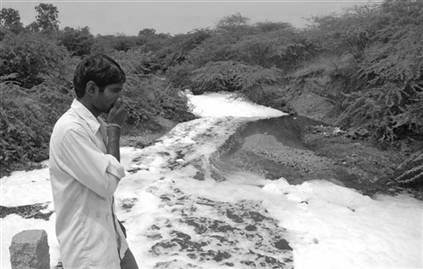 Humanity has essentially two ways to get rid of bacterial infections. Vaccines, which create defenses in the human body in order to prevent invasion by specific microbes, and antibiotics, which only serve as a medicine. That is, they only act when the bacterium has already started to invade.
Humanity has essentially two ways to get rid of bacterial infections. Vaccines, which create defenses in the human body in order to prevent invasion by specific microbes, and antibiotics, which only serve as a medicine. That is, they only act when the bacterium has already started to invade.
There are many bacterial infections, perhaps most, for which vaccines are not justified or cannot be developed and therefore antibiotics are really the only alternative. In other words, humanity is still very dependent on antibiotics to be able to fight bacterial infections.
When using antibiotics for the first time, doctors soon realized that some bacteria were naturally resistant.
No wonder. After all, antibiotics were produced in nature and it was quite possible that bacteria were used to living with them. It all made sense. Just find new antibiotics that could kill the resistant bacteria and the situation would be under control. For about 50 years this reasoning was followed.
But it wasn't long before the scenario began to change. Fewer and fewer natural substances with the potential to become a successful antibiotic were found. As a result, the pharmaceutical industry has lost its previous interest and enthusiasm.
In hospitals around the world, especially in Europe and the United States of America, there were more and more reports of infections caused by bacteria that resisted antibiotics, which were previously successful in treating the same type of infections. The consequences of the excessive and incorrect use of antibiotics seemed to be coming to the fore.
Quite simply, bacteria had reacted to years and years of abuse. In the human body, in the bodies of animals or other animals and in the environment, they have adapted to life in the presence of antibiotics. At first in the minority, bacteria that managed to resist antibiotics began to become more and more abundant and to disperse in the environment.
It was quickly realized that the bacteria passed information among themselves that made them resistant to antibiotics. Apparently no borders were respected. Bacteria that lived in the environment (eg water) could pass on their information to others that cause disease in humans.
On the other hand, the most severe resistances, initially observed only in hospitals, seemed to escape into the environment at a frightening speed. Globalization itself and the free movement of people and goods seem to have helped to spread this silent plague.
Faced with some evidence given by science and experienced by patients and doctors, warnings about the importance of proper administration and use of antibiotics began to rise in tone. But, even so, society seemed to live apart from a problem that is, in fact, everyone's. To the great alarm of public health authorities, in 2010 a super-resistant bacteria to antibiotics appeared in Europe.
Apparently, she had escaped from India or Pakistan, being brought to Europe by people who traveled there for kidney transplants.
Over the last few decades, the West has transferred some of its antibiotic production factories to the Asian continent, namely to India. The low labor costs and lack of environmental legislation make the production of antibiotics in those countries much more profitable from an economic point of view.
Thanks to this lack of legislation, in some rivers near the factories, the concentration of antibiotics reaches levels higher than those used to treat an infection! This same water is used for people to bathe, cook and drink. It would not be surprising if a few years from now, some more super-resistant bacteria would appear from these places.
One thing seems to be certain, where there are bacteria (and they are practically everywhere), there will be some that are resistant to antibiotics and they will not hesitate to show their strength if pressured to do so.
(Professor and Researcher at the School of Biotechnology of the Catholic University, Porto)
Science in the Regional Press – Ciência Viva
Photos:
http://www.nature.com/news/2011/110216/full/news.2011.46.html



















Comments